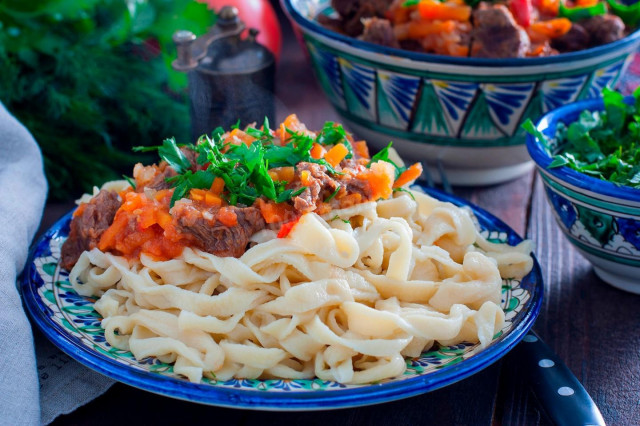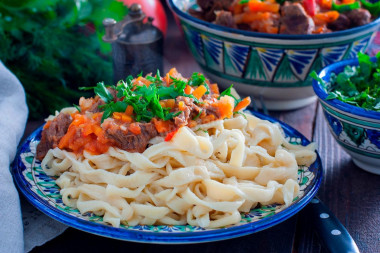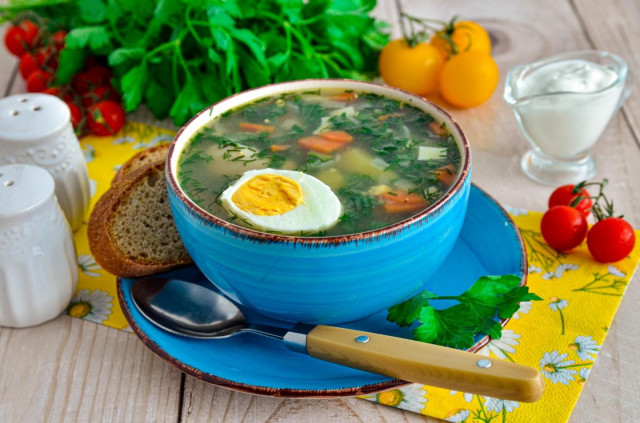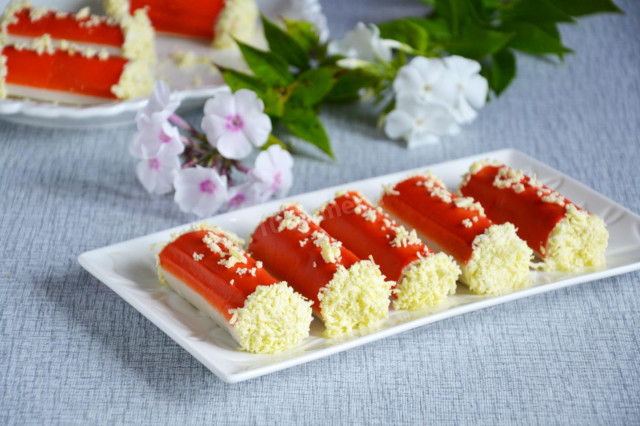Composition / ingredients
Step-by-step cooking
Step 1:
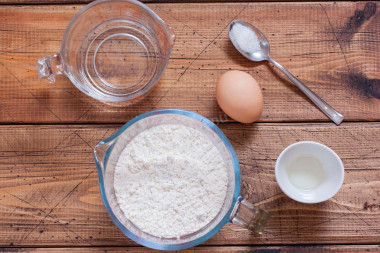
Prepare the necessary ingredients. I took the amount of food for two servings, but it's better to take more. Leftovers can always be frozen and stored in the freezer in a tightly closed bag. By cooking noodles for the future, you will thereby save energy and cooking time next time.
Step 2:
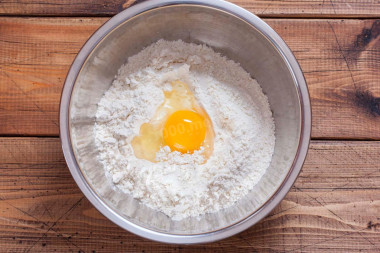
Sift the flour together with table salt into a deep bowl. So it will be enriched with oxygen and the dough will be more tender and obedient. Make a funnel in the middle and break one large egg there. It is better to take a homemade egg with a bright orange yolk. It will give the pasta a nice yellow color. Gently mix the flour with the egg with a spoon, then continue to knead with your hands.
Step 3:

Pour cold water and odorless vegetable oil into a bowl. Knead an elastic, rather steep, smooth, non-sticky dough. Add as much flour as needed to achieve the desired consistency. Cover the dough bowl with a towel. Leave for 30 minutes so that gluten is released from the flour. The dough will become more plastic and will not tear when rolling out. During the time while the dough is resting, it should be kneaded four times.
Step 4:

Sprinkle the work surface with flour. Put the dough out of the bowl. Roll it out into a thin layer. The thinner you roll out, the tastier and more tender the noodles will turn out. If necessary, add a little flour, but do not overdo it, otherwise the dough will become even steeper and it will be harder to roll it out.
Step 5:

Sprinkle a thinly rolled layer of dough well with flour on both sides. Roll it into a loose roll. With a sharp and long knife, cut thin rings 3-4 mm wide. Divide them into strips. If they stick together, sprinkle the blanks with more flour. Spread them on a tray or a large cutting board (also sprinkle with flour). Leave to dry for 10-15 minutes. Turn it over so that the pasta dries on the other side as well.
Step 6:
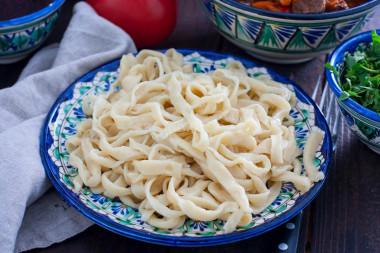
Boil water in a wide saucepan. Add salt. Add 1-2 tablespoons of vegetable oil so that the noodles do not stick together. Cook the homemade noodles for about 3-4 minutes after boiling. Try. It is important that the pasta is cooked, not digested. How to determine its readiness? Try. Noodles should be elastic, but not rigid. Put it in a colander. Rinse with cold boiled water. Let the liquid drain. Serve the dish immediately while it is hot.
It is very tasty to serve homemade noodles with meat gravy and vegetables. My family were absolutely delighted. They asked me to cook more often.
You can try to cook pasta by mixing wheat flour from durum and premium varieties in equal proportions. Such noodles, when cooked, will retain a dense texture better, will not boil and will be even tastier.
If you cook noodles for the future, keep in mind that such dough dries quickly. Therefore, when working with the first part of the dough, cover the second with a damp towel or wrap it in a plastic bag.
Be prepared for the fact that flour may need more or less than indicated in the recipe. You need to focus on how the dough should turn out (dense, soft, liquid, etc.). A lot of useful information about why flour of the same variety may have different properties, read this article
Caloric content of the products possible in the composition of the dish
- Chicken egg - 157 kcal/100g
- Egg white - 45 kcal/100g
- Egg powder - 542 kcal/100g
- Egg yolk - 352 kcal/100g
- Ostrich egg - 118 kcal/100g
- Whole durum wheat flour fortified - 333 kcal/100g
- Whole durum wheat flour, universal - 364 kcal/100g
- Flour krupchatka - 348 kcal/100g
- Flour - 325 kcal/100g
- Vegetable oil - 873 kcal/100g
- Salt - 0 kcal/100g
- Water - 0 kcal/100g

